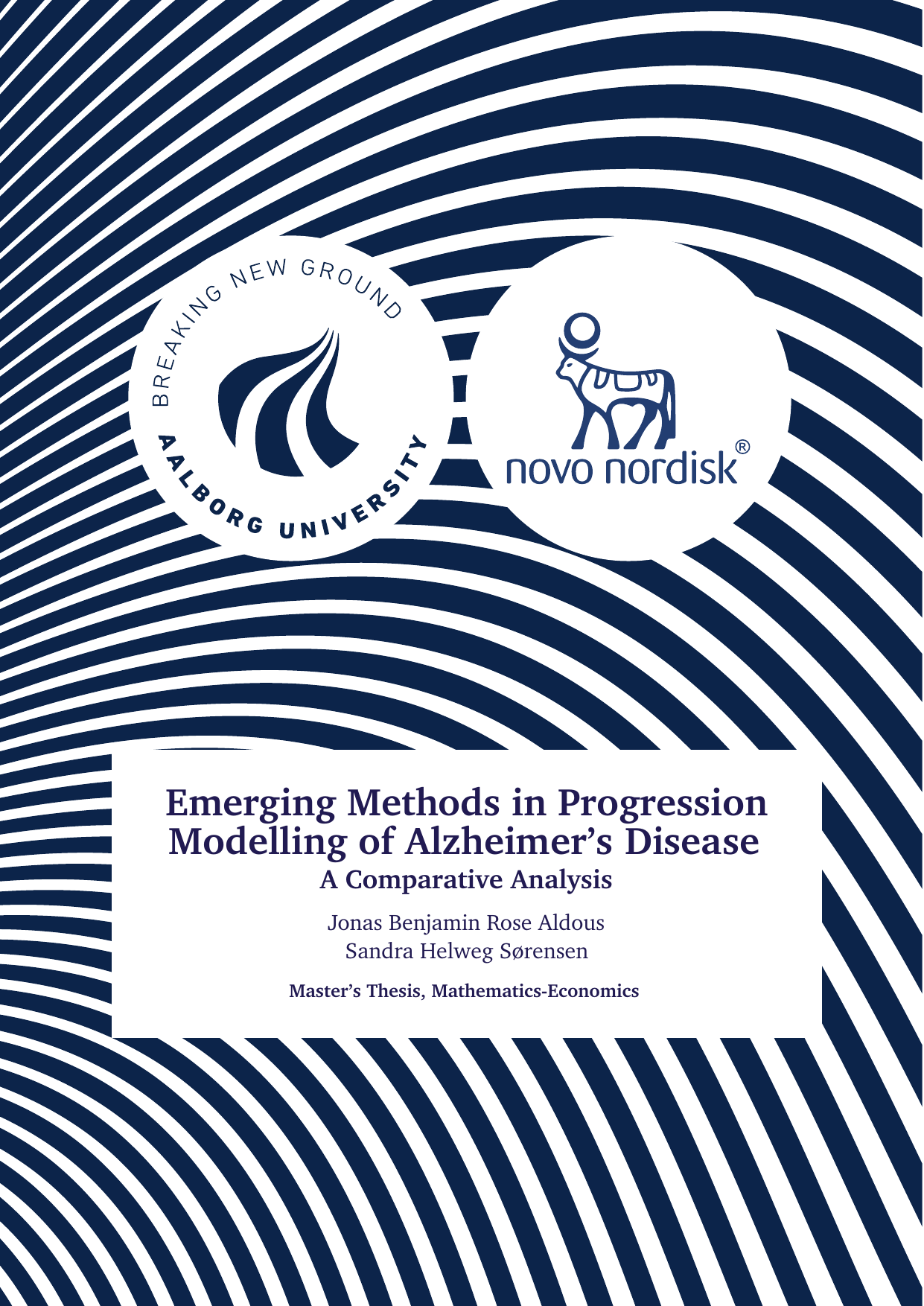
Emerging Methods in Progression Modelling of Alzheimer's Disease: A Comparative Analysis
Term
4. term
Education
Publication year
2024
Submitted on
2024-06-03
Pages
73
Abstract
This thesis is a study of the progression models for repeated measures (PMRMs) introduced in[Raket, 2020]. Data for the thesis is provided by Novo Nordisk A/S and obtained from the Critical Path for Alzheimer's Disease database. The initial part of the thesis is preliminary theory regarding mixed models as well as a presentation of the PMRMs and the conventionally used constrained longitudinal data analysis (cLDA) model. Furthermore, we present modifications of the PMRMs, including the removal of a correlation structure in the errors, as well as the addition of a random effect. Moreover, a way of implementing the PMRMs in an analysis of heterogeneity of treatment effect between subgroups is explored. We conduct a simulation study, where the performance of the PMRMs is examined in different scenarios, and compared to each other as well as the cLDA model. Here, we find that there are both pros and cons of using the PMRMs, and extensions thereof, compared to the cLDA model. Overall, while the cLDA model offers robust performance and a controlled type I error rate, PMRMs provide better interpretability and higher statistical power in specific scenarios, highlighting their potential applicability in clinical trials. Lastly, we present a way of implementing the PMRMs in health economic modelling, utilising a Markov Model and the assumption of a constant treatment effect over time. Here, a brief overview of how they can be used in a cost-effectiveness analysis is presented. The concluding elements of the thesis discuss the interpretability of the models' estimates and their applicability in health economic modelling and decision-making.
Documents
